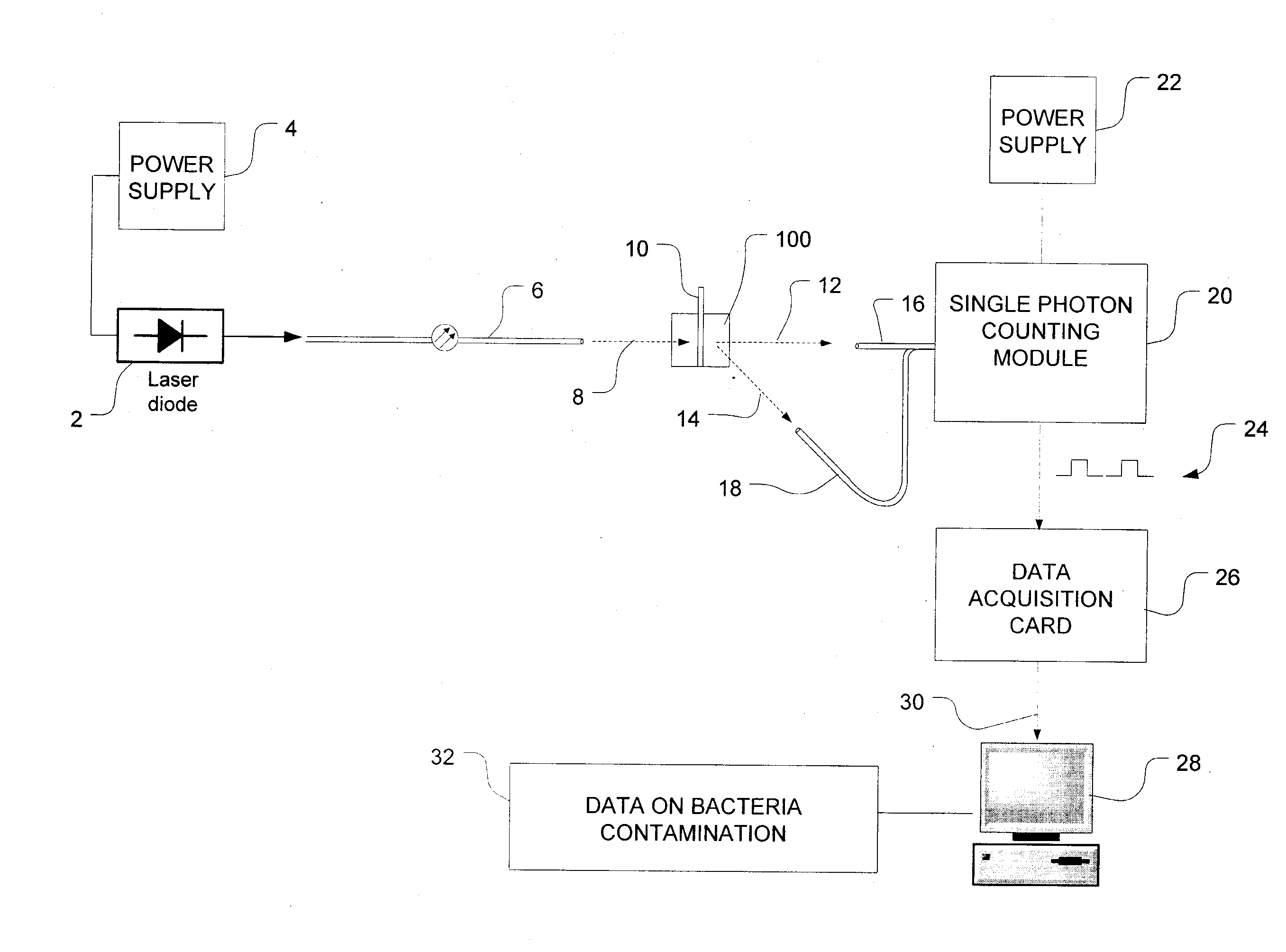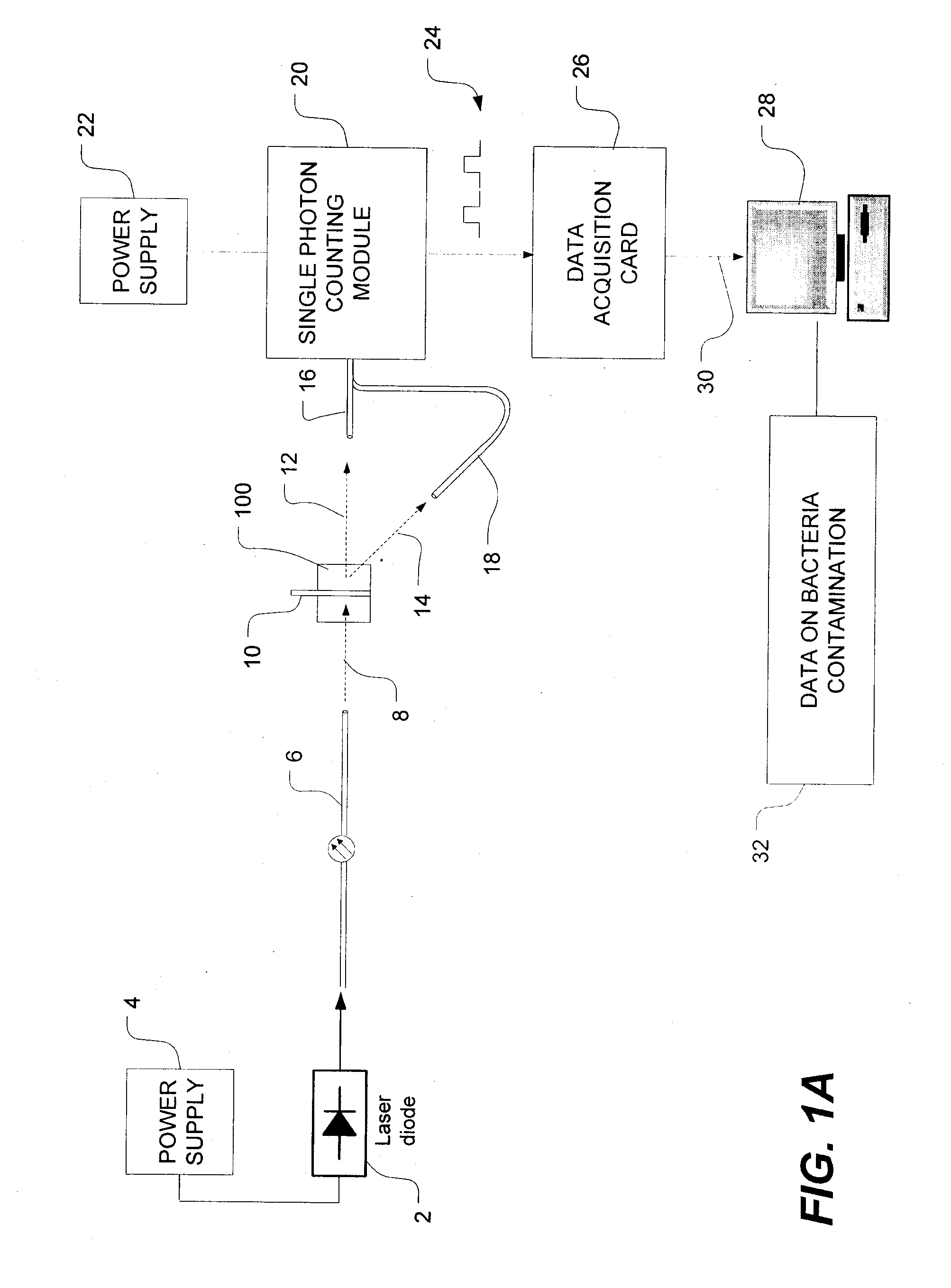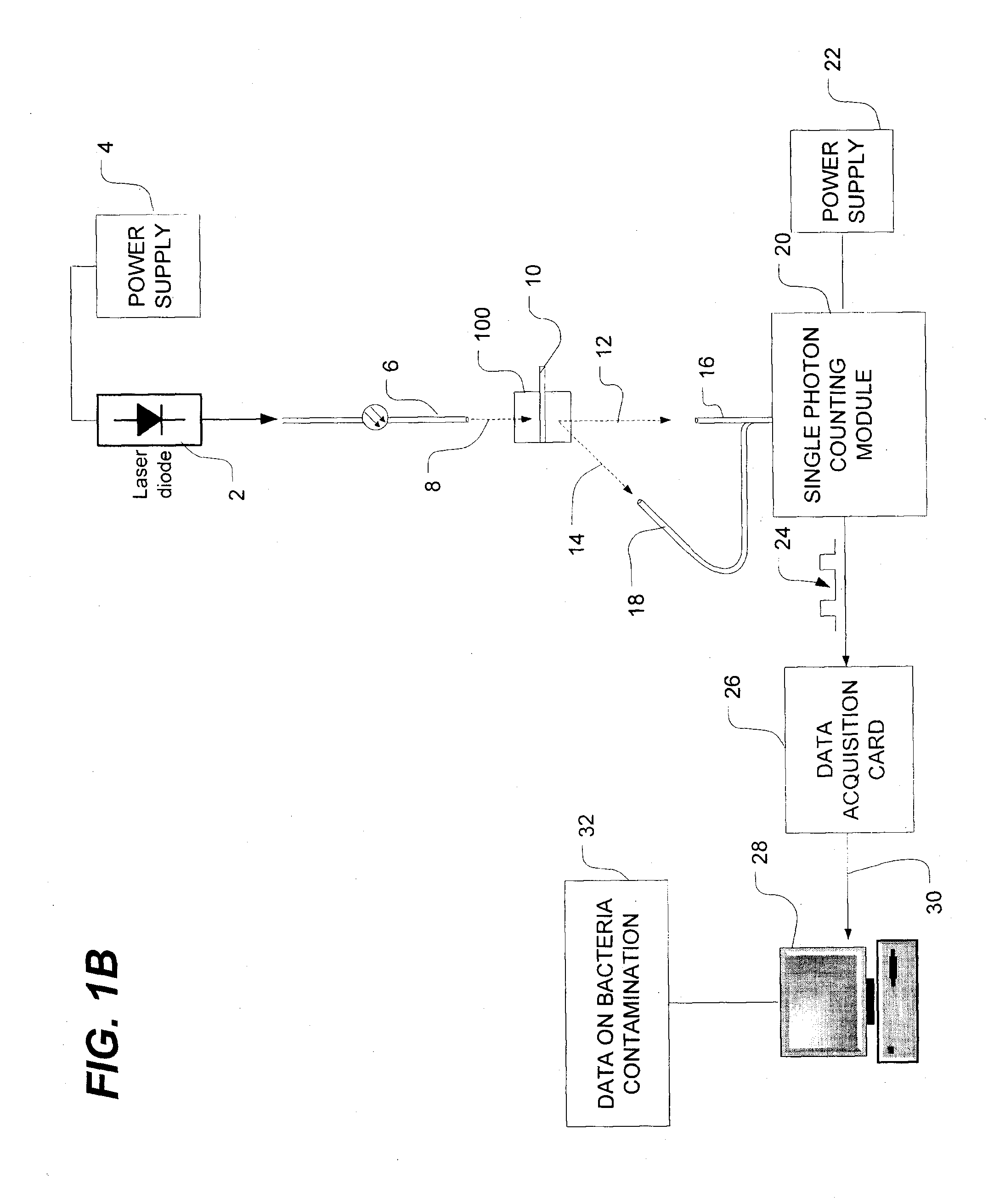Method of detecting bacterial contamination using dynamic light scattering
a dynamic light scattering and bacterial technology, applied in the field of dynamic light scattering, can solve the problems of platelets and bacteria significantly reducing the scattering intensity, and the scattering intensity is significant increased, so as to reduce the scattering intensity, increase the scattering intensity, and avoid invasive
- Summary
- Abstract
- Description
- Claims
- Application Information
AI Technical Summary
Benefits of technology
Problems solved by technology
Method used
Image
Examples
Embodiment Construction
[0043]Various embodiments and aspects of the present invention will now be described, including a novel DLS bacteria-detection system, a novel platelet storage bag, and a novel method of using DLS to detect bacteria. While the method, bag and bacteria-detection system are preferably used together, the method may be performed using a different DLS system and / or without using the novel platelet storage bag. However, if a different DLS system is to be used, needle sampling is required (with all the associated disadvantages) or the test would have to be done on a post-production sample (as is done using the prior-art BacT / ALERT system.)
[0044]DLS Bacteria Detection System
[0045]FIG. 1A is a schematic view of a bacteria detection system using dynamic light scattering (DLS), which is also known as quasi-elastic light scattering (QELS). As shown in FIG. 1A, the system has a light source such as, for example, a laser diode 2 which is powered by a power source, as is well known in the art. The...
PUM
 Login to View More
Login to View More Abstract
Description
Claims
Application Information
 Login to View More
Login to View More - R&D
- Intellectual Property
- Life Sciences
- Materials
- Tech Scout
- Unparalleled Data Quality
- Higher Quality Content
- 60% Fewer Hallucinations
Browse by: Latest US Patents, China's latest patents, Technical Efficacy Thesaurus, Application Domain, Technology Topic, Popular Technical Reports.
© 2025 PatSnap. All rights reserved.Legal|Privacy policy|Modern Slavery Act Transparency Statement|Sitemap|About US| Contact US: help@patsnap.com



